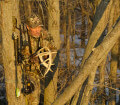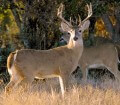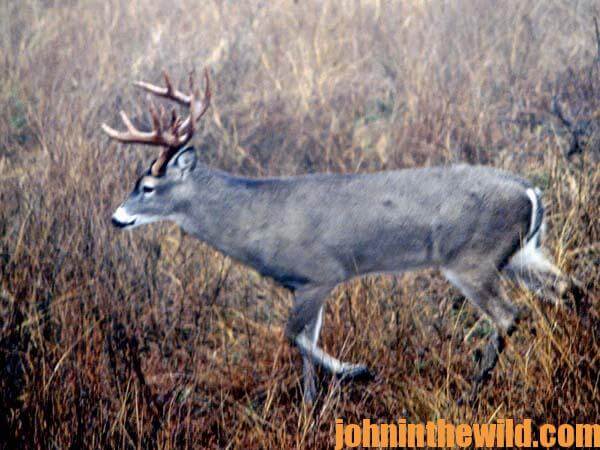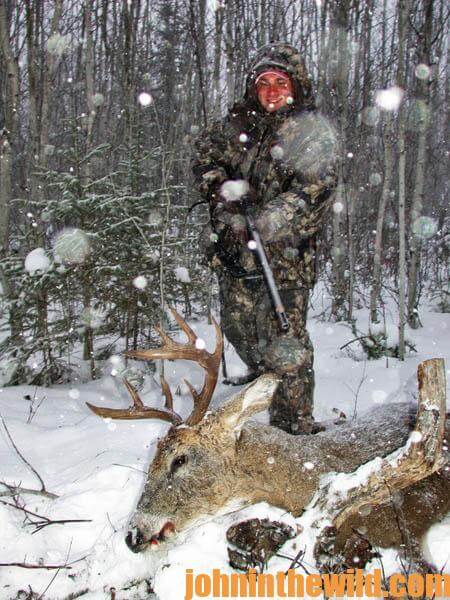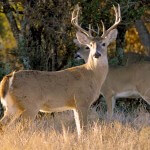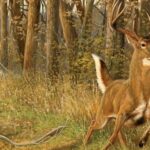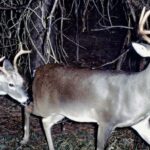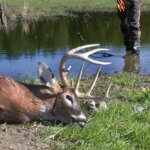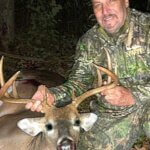John’s Note: When snow falls, and the temperature drops, you’ll find hugging a heater much-more appealing than leaning-up against the bark of an icy tree to take a buck with your bow. In cold-weather conditions, you must make staying warm your first concern without wearing too-many bulky clothes. You also must know what the deer do under these weather conditions for you to locate and take them. These top hunters I’ve interviewed hunt in the ice and snow every year. Here’s the bowhunting tactics they’ve used that have given them success in cold, bad weather.
“Often in the cold weather you may be in snow and icy, freezing weather for 2 or 3 days,” Chuck Jones, comments.
“If you can pick the day you hunt, try and hunt the first day the weather breaks. Since the deer have been yarded-up for 2 or 3 days, when they get that first break in the weather, they’ll move the most on that day.”
Why Drive Deer in Bad Weather:
“If you have to hunt in bad weather, and you know the deer are in thickets too dense for you to hunt, then use man drives,” Jones suggests. “The secret to an effective man-drive when you’re bowhunting is not to run the deer out of the cover but instead to walk him out of the cover. Before you begin your drive, scout the perimeter of the thicket. I particularly enjoy driving big honeysuckle thickets. Attempt to locate the trails that the deer are using to go in and out of the thick cover. Put your standers in tree stands on the edges of these trails on the downwind side. Have the driver go to the upwind side of the thicket, and begin to slowly and quietly move into the cover.
When I’m putting-on a drive, as soon as I get into the cover, I snort like a buck. Then I’ll stand still for 5 or 10 minutes. I want the deer in the thicket to think a buck on the upwind side of the thicket has seen or smelled a hunter. As my human odor drifts into the thicket, the deer holding there will pick-up my odor. Because they’ve heard what they think is a buck snort, they’ll often start sneaking-out of the cover on the downwind side and walk right in front of my standers. After I’ve snorted at one end of the thicket, I’ll back out of the thick cover and go to the opposite end of the thicket on the upwind side. I’ll move in 5 to 10 yards, break a limb and stand there for 10 minutes. Now the deer have smelled human odor coming from a different direction and have heard a limb break. They really don’t know which way the hunter is coming from, but they know they need to get out of that cover.”
Click here to get “How to Hunt Deer Up Close: With Bows, Rifles, Muzzleloaders and Crossbows” and “Deer and Fixings” by John E. Phillips.
About the Author
John Phillips, winner of the 2012 Homer Circle Fishing Award for outstanding fishing writer by the American Sportfishing Association (AMA) and the Professional Outdoor Media Association (POMA), the 2008 Crossbow Communicator of the year and the 2007 Legendary Communicator chosen for induction into the National Fresh Water Hall of Fame, is a freelance writer (over 6,000 magazine articles for about 100 magazines and several thousand newspaper columns published), magazine editor, photographer for print media as well as industry catalogues (over 25,000 photos published), lecturer, outdoor consultant, marketing consultant, book author and daily internet content provider with an overview of the outdoors. Click here for more information and a list of all the books available from John E. Phillips.

